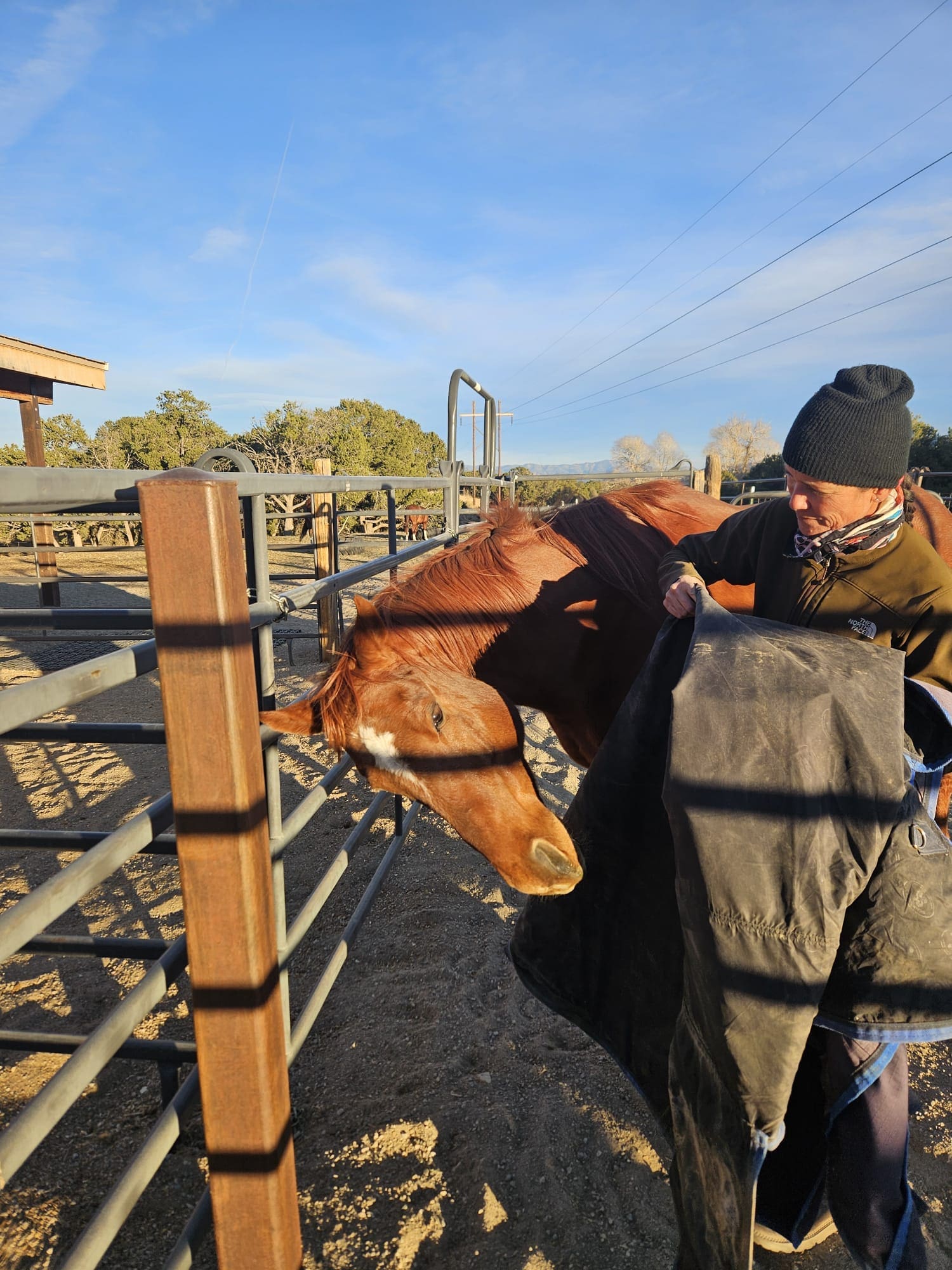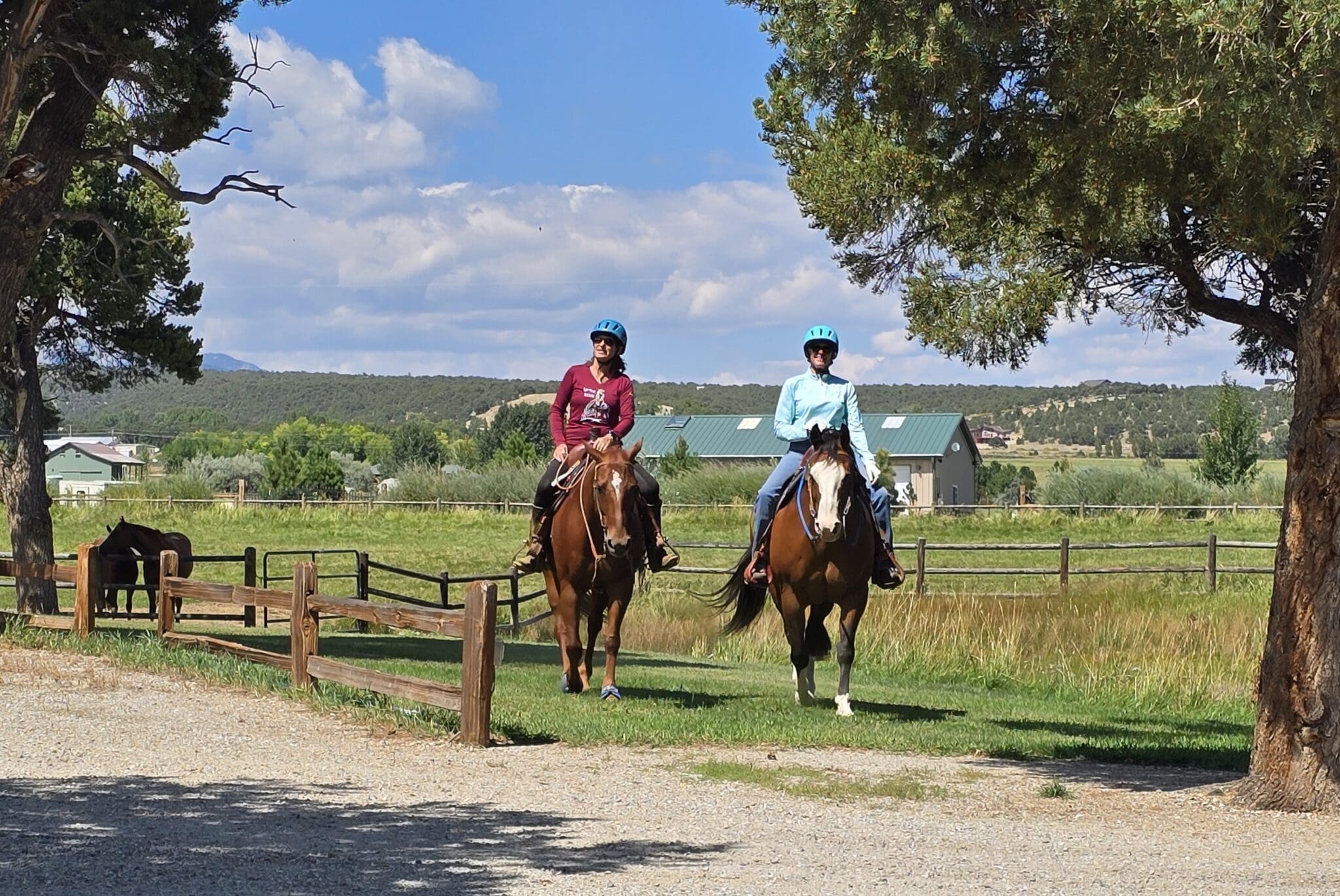Question: Hi Julie, I came across a book recently that talked about the comfort snaffle. I was surprised to learn that snaffles are not exactly what they are supposed to be and some bits that I thought were snaffles (like the Tom Thumb) are not snaffles, nor are they mild. I have noticed at times some of our horses pulling on the reins and opening their mouths. From what I read it was saying that snaffles could keep a horse from swallowing because of the pressure on the tongue. I’d like to keep our horses as comfortable as possible as they work and I know they have to endure the constant stream of uneducated and unskilled riders. Is it better to use a snaffle or a curb on our trail horses?
Answer: The kind of bits you use on your lesson and trail horses depends on the horse, its training and temperament, the type of riding it will be expected to do and the average skill level of its riders. For program horses, we have to consider many factors: will your clients be riding one handed or two (do you want them to be able to hold onto the horn?); are your horses trained to neck rein; will they only be required to follow in a line out on the trail, with minimal need for contact on the bit; or will the riders be in the arena and doing school figures with lots of turns and transitions?
There are basically two classifications of bits: direct pressure and leverage. Direct pressure bits are what we commonly refer to as snaffles and the reins are always attached directly opposite the mouthpiece, causing a direct pound-for–pound pull on the horse’s mouth from the rider’s hands. Most, but not all, snaffles are jointed in the middle and in general they can be mild but they do put maximum pressure on the horse’s tongue.
However, it is not the jointed mouthpiece that defines them as snaffles, nor is that what make them mild. This is what leads to a lot of confusion with the Tom Thumb, which is actually a leverage bit, not a snaffle. Some snaffles can be mild, while others can be quite harsh; they can apply pressure to the lips, tongue, bars of the mouth (gums and jaw bone). Since beginner riders tend to hang on the reins, and the snaffle puts maximum pressure on the tongue (which is what horses protest the most about bit contact) the snaffle might not be the best bit for program horses, particularly if the horse is already trained to a curb bit. I have found that horses that neck rein and are being ridden one-handed are usually more comfortable in a mild curb bit.
A leverage bit (commonly called a curb bit) has shanks (bars running along side the horse’s mouth) and a curb strap (or curb chain), like the Tom Thumb; the reins are attached below the mouthpiece at the bottom of the shanks and the head stall is attached above the mouthpiece, at the top of the purchase. There is not direct pressure from the bit, but leveraged pressure on the horse’s mouth. A leverage bit (commonly referred to as a Curb bit) can apply pressure to the horse’s lips, tongue, bars and palate; as well as the poll and chin.
Just remember, the curb bit can put considerably more leverage on the horse, which can multiply the pressure from the rider’s hands. The curb bit should be ridden on a loose rein and light pressure should be used. It is best to ride one-handed but do not hesitate to pick up the other rein if you need to correct the horse’s response. Ironically, many people think that it is okay to go to a harsher bit when you have control issues with a horse. The truth is, the curb bit should only be used on well trained and responsive horses, so that it can be ridden with little or not contact. Going to a harsher bit will never fix a training problem; only training will, and that will usually involve a milder bit.
The curb is more appropriate for finished horses and horses that are trained to neck rein. Remember, horses don’t automatically know how to neck rein; it is a learned response. If you have to revert to two hands a lot that is probably an indication that your horse is not well enough trained for the curb and may need more two-handed work in a snaffle.
Many people consider the snaffle to be milder than the curb, but that is certainly not always true all of the time. A mild curb bit may be much more comfortable for your horses than a snaffle, especially if it means the rider will use less pressure and the horse has less pressure on his tongue. That, of course, depends largely on the rider and the type of riding he will do.
You can use two hands with the curb bit, but it is designed to ride one-handed. The snaffle is better suited for two-handed riding, but it can be used one-handed if the reins are loose most of the time and little contact is needed. If the horse is well-trained, obedient and easy to control and it is trained well to the neck rein, it might work best in a very mild curb. Some of these horses will work well and comfortably in the snaffle as well; use the least amount of bit you can get away with and still have good control, keeping in mind that a mild curb with tongue relief and a leather chin strap may be more comfortable for your one-handed, neck-reining horses than a snaffle.
Let’s face it, most of our good trail horses will do their job just as well in a halter with a lead rope thrown around its neck. Of course, we need to have bridles on any horses we put clients on, because that is the standard means to control a horse for riding and therefore that is the accepted protocol. We always must design our policies and procedures and conduct our rides in a manner that is defensible on a witness stand.
As I said, people often confuse the Tom Thumb with a mild bit when in fact it is quite harsh. Whenever you pick up on the reins, two things happen to your horse’s mouth with the Tom Thumb. The joint pokes up into the horse’s palate and the sides of the bit collapse onto the horse’s jaw in a motion known as the “nutcracker effect” and the joint presses down into the horse’s tongue. Both of these harsh actions will cause the horse to throw his head up (to escape the palate pressure) and gape his mouth open (to avoid the nutcracker effect and tongue pressure). The only time I have used a Tom Thumb on trail horses is when I have a big stout horse being ridden by lightweight riders and the horse has a habit of trying to pull the reins out of the rider’s hands to eat grass. The Tom Thumb will help dissuade the horse from this bad habit and give the lightweight rider enough pressure to get its attention.
What makes the curb bit harsh or mild, is the length of the shanks compared to the length of purchase, the configuration of the mouthpiece and the texture and diameter of the curb strap. The amount of leverage the bit has depends on the ratio between the purchase(the part of the shank that is above the mouthpiece) and the shank (which is the part below the mouthpiece). A one to one ratio would be very mild with little leverage; a one to 3, 4 or 5 ratio would be increasingly harsher and multiply the leverage by 3, 4 or 5 times. There are literally thousands of different type mouthpieces, from mild to wild, but the bits I use are Myler bits because they are designed ergonomically and to give the horse as much comfort as possible in his mouth. The wider the diameter of the mouthpiece and the smoother it is, the less pressure on the horse’s mouth. This applies to snaffles as well.
Consideration should also be given to the shape of the mouthpiece in regards to relieving pressure on the horse’s tongue and that is why the so-called Myler comfort snaffle is superior, being more ergonomically shaped for the horse’s mouth and give relief on his tongue. Although a very high and/or sharp port can be quite harsh, pushing into the horse’s palate if excessive rein pressure is used, a totally flat mouthpiece (like a mullen mouth) does not give any escape for the tongue and makes it hard for the horse to swallow and keep his mouth and tongue moving to promote salivation, which acts as a lubricant in the horse’s mouth.
For a mild curb bit, I like the Myler 04 mouthpiece with the HBT shank. I also like the Myler 33 mouthpiece on either the short shank (HBT) or the long shank. This bit would be good for the horse with a lot of training that is responsive and doesn’t need much contact. It gives the greatest amount of tongue relief with an ergonomic port that is shaped to the contours of the horse’s mouth. The jointed mouthpiece is nice and mild if it is designed in such a way as to eliminate the two harsh actions of the Tom Thumb. The kind I like are made with a little tube across the joint which both prevents it from poking into the horse’s palate and also keeps the sides from collapsing on itself. I would also try to find a mouthpiece with curvature at the corners to give tongue relief and made of sweet iron with copper inlays to encourage salivation and maybe even some sort of roller for the horse to play with. This encourages the horse to accept the bit and play with it, keeping him soft and relaxed.
There are literally thousands of bits on the market and many are great bits and some are horrible torture devices that ought to be illegal. It really helps to understand how bits work on the horse’s mouth and head and what makes them mild or harsh. Most trail and lesson programs use a combination of snaffles and mild curbs, with the occasional horse needing something different. You’ll have to experiment with a few basic kinds of bit to see what each horse seems more comfortable with and works best.
Shop Julie’s Bits HERE



